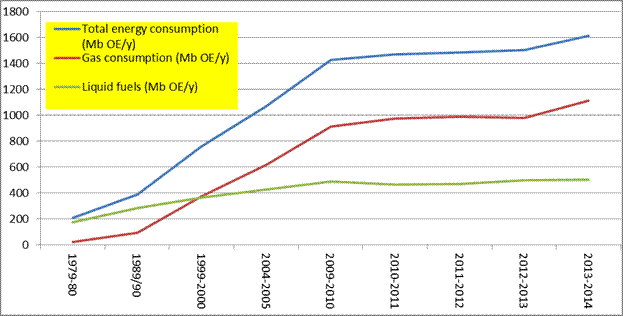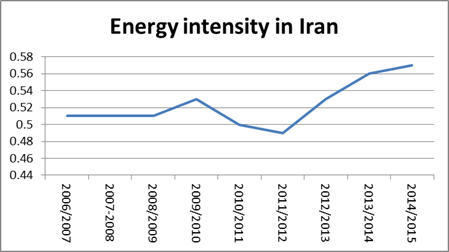Iran may become net energy importer by 2025
With the current pace of Iran’s energy consumption growth, the country may become a net energy importer by 2025, Farzad Kiyasat, a member of Iran’s Energy Conservation Society, said Mar. 13.
He added that Iran, with a population of 80 million, consumes energy like a country with an 800-million population, and each 4 years Iran’s energy usage doubles, Fars reported.
According to him, the energy intensity index of Iran is very high.
Currently, Iran daily produces 4.2 million barrels (mb/d) of oil and gas condensate, while the figure is expected to reach 5.4 mb/d by 2020. Iran’s gross gas production stands at about 280 billion cubic meters per year (bcm/y), which is expected to be around 450 bcm/y in five years.
However, the official statistics of last decades indicate that the country’s energy consumption increased significantly, very faster than population and GDP growth.

Iran’s primary energy consumption. Source: Oil Ministry’s statistics
The statistics indicate that the primary energy consumption, as shown in the chart above, increased from about 206 million barrels of oil equivalent (mb OE) in 1980 to 1,616 mb OE in 2014, which indicates a 8-fold growth in 35 years.
However, Iran’s population only increased from about 39 million in 1980 to above 78 million in 2014.
According to the International Energy Agency, Iran’s energy intensity index is one of the highest in the world (two times of the world average), and has been rising on average by about 3.4 percent a year over the past 40 years.

* Energy intensity (barrel per 1 million rials)
Energy intensity measures the amount of primary energy supply a country needs to generate a unit of gross domestic product (GDP).
The figure for Iran is 0.9 million tons of oil equivalent to create $1,000-worth of GDP, which is nine times more than that of Japan and Germany.

Comments
Post a Comment